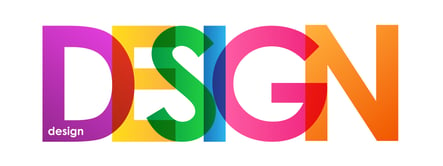
The internet is a vast sea of information – and not all of it is good.
It’s great that the internet has given us the capability to connect with one another and encourage the free exchange of ideas, but the dark side of this trend is that misinformation spreads like the plague. Trust us, this is a pet peeve of ours, and we've covered it on multiple occasions for different fields. And yet, despite the efforts of pros across the industry, myths spread, and in many cases, flourish.
This is as true for web design as it is for any other field. Let’s take a look at a couple web design myths that we’d like to see put to rest.
Myth #1: Design and the User Experience (UX) are Separate
Many business owners think of “design” as bright colors, bold fonts, and dramatic content layouts used to add glitz and glamor to a website. At the same time, they view the UX as a separate entity that exists in a vacuum. While it’s true that effective web design can polish up a bare bones site, don’t make the mistake of thinking that it’s separate from your market’s UX: Design and the UX are one in the same.
Web design encompasses everything from on-site navigation to the visual hierarchy of page elements to the SEO variables that dictate where the site appears in organic search. This is why it’s so important to hire quality web design firms to work on your site. Design isn’t just a coat of paint you slap on at the end – it’s a foundational part of site development that must be considered from the very beginning.
Myth #2: Visual Content Creates Engagement
This oft-spouted myth was born from the wealth of data showing that when used correctly, visuals can be powerful ways to engage audiences. This might be true, but that doesn’t mean you can just slap visuals on your site and instantly improve its ability to engage your user base.
Any type of visual, be it an image or video, needs to serve a purpose. For most websites, this usually means employing them to draw attention to calls to action, page elements you want users to interact with, or other features that need to stand out.
Myth #3: Keep Your Call to Action (CTA) above the Fold
We’re not sure why this myth is so persistent, but it pops up all the time in the web design world. Designers are so scared of statistics showing that average bounce rates for landing pages are as high as 70 to 90 percent that they think they need to shove the CTA in their users’ faces before they have a chance to click away.
Don’t be fooled – there’s no guarantee that a below the fold CTA will perform better, but there’s enough research supporting below-the-fold strategies to give this common sense logic a second thought.
Trust the Experts
You don’t take medical advice from online strangers (do you?), so why take web design advice from marketers without a creative bone in their bodies? When you’re confused about the best way to navigate your web design, trust in the professionals who have the credentials to back up their words. There are many myths out there – don’t let them drag you down.


